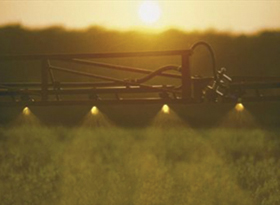In a recent article on Ag.com by Edith Munro, Dan Towery offered these tips for cover crop success.

Cover crop decisions can be initially overwhelming. “Details – especially timing – are critical,” says Dan Towery, president of Ag Conservation Solutions and Soil and Water Conservation Society.
Here are five questions and tips Towery gives to guide you if you are considering a cover crop.
1. What do you want to accomplish with a cover crop?
Cover crops offer a range of possible benefits that include:
• Reducing erosion.
• Reducing soil compaction.
• Scavenging nitrogen.
• Fixing nitrogen.
• Increasing organic matter.
• Improving weed control.
• Increasing water infiltration.
• Improving soil biological activity.
• Matching goals with cover crop selection is essential.
Selecting a maximum of three is the first step to narrowing the list of cover
crops to consider.
2. How will you plant it and when?
Planting method and timing are key interrelated decisions. Traditionally, the best seed-to-soil contact comes from drilling, but that must occur after harvest. In the Upper Midwest, seeding that late limits the cover crop options.
3. What will follow the cover crop in your rotation?
Since some cover crops tie up nitrogen, it is especially important to consider the carbon-to-nitrogen ratio of the covers being considered if the following crop will be corn.
4. Which cover crop will you plant?
Multiple options are available depending on location. Consider using the Midwest Cover Crop Council’s Cover Crop Decision Tool.
The tool provides customized guidance for Illinois, Indiana, Iowa, Michigan, Minnesota, North Dakota, Ohio, Ontario, and Wisconsin. It allows you to plug location, cash crop, planting and harvest dates, and cover crop objectives to narrow the list of cover crop choices that match your specific conditions.
Two books offer more detailed information:
- Managing Cover Crops Profitably (Third Edition), published by the Sustainable Agriculture Research and Education program (sare.org)
- Cover Crops Field Guide, from the Midwest Cover Crops Council.
5. How will you terminate your cover crop?
Towery recommends planning early and killing the tougher cover crops early. Some cover crops will winterkill on their own, and some may be easy to kill. Others may require following fairly specific instructions to terminate.
Once you have completed your initial research and have decided on a potential list of cover crops, Towery recommends planting a small trial plot to become familiar with various cover crop traits.
“It can be as small as 10×10 feet. Look for opportunities where you can watch how your cover crops do through a fall-winter-spring cycle,” he suggests. “A sweet corn patch is good, or if you have a small wheat or corn silage field.”
Success with cover crops requires a systems approach, Towery says. “The reason some growers can make cover crops work but their neighbors can’t isn’t complex. It’s all about attention to details and timing.
“Doing the homework minimizes unpleasant surprises. You must complete all the steps for success,” he says.






